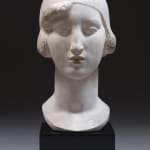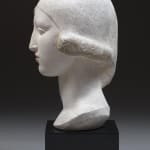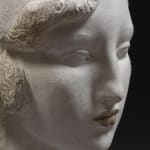


Alfred Janniot French, 1889-1969
Tête Idéale or la Sicilienne, 1921
Exceptional plaster sculpture, retouched after casting
Height (without base): 15.7 in.
Length: 7.5 in.
Depth: 6.3 in.
Length: 7.5 in.
Depth: 6.3 in.
signed by unknown hand, "Alfred Janniot sculpteur" and inscribed "1er envoi de Rome"
Further images
Provenance
Exhibitions
Publications


